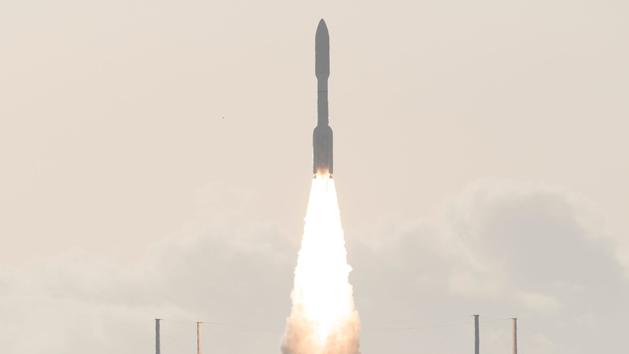It is certainly not the most delicate part of the mission, but a launch is never trivial either. It was all the same for March 2020 to be propelled by a machine nearly 60 meters high and more than 500 tons, mainly made of flammable materials (fuel and powder boosters). In other words, a gigantic firecracker. The actual spaceship, hidden under the fairing of the rocket, does not measure more than a few meters, for a mass of 3.6 tons. And the Perseverance rover it carries, like a Russian doll set, is even smaller - just over a ton.
Read also: The incredible adventure of the Mars 2020 mission
The Atlas V rocket did not fail in its mission. In 83 launches, it has only experienced one failure, and more: the satellites it was carrying had simply not been placed exactly in the right orbit and the error had been corrected. Suffice to say that March 2020 was in good hands. It took a little over two hours for the two-stage rocket to properly place its payload on its interplanetary cruising path. The much more perilous arrival on Mars is scheduled for February 18, 2021. The trip will have lasted seven months, for a distance covered close to 500 million kilometers. The spacecraft, launched like a bullet, will then penetrate the atmosphere at very high speed, protected by a heat shield. Under the effect of the friction of the air, the temperature will rise to 1,300 ° C before a gigantic parachute finishes braking the vessel. Retro-rockets will take care of the braking of the platform, which will stabilize a few meters from the ground to deposit the rover via a system of cables. All this will only take seven minutes. The "seven minutes of terror", as NASA calls them. From the control station, scientists and engineers are helpless: they can only wait for the automatic procedure to come to an end.
Read also: Three probes for a very Martian summer
If all is successful, this will be the fifth time that NASA has managed to deploy a rover on the surface of Mars after Sojourner (1997), Spirit and Opportunity (2004) then Curiosity (2012), still in operation. If China, which launched its own Martian spacecraft last week, also succeeds in landing its rover, in 2021 there could be three rovers in operation on Mars, a first.
First Martian samples
But it is obviously Perseverance that will hold the spotlight. Equipped with the first Martian microphones and a small helicopter that could become the first extraterrestrial flying machine, it will be mainly responsible for collecting the first Martian samples to bring back to Earth. About thirty small hermetically sealed rock cores will be taken during the mission, then deposited on the surface. A perfect Petit Poucet. A future rover, which could be European, will be responsible for recovering them in 2026 to place them in a mini-rocket imagined by NASA. Placed in Martian orbit, these samples will then have to be recovered by a large vessel capable of returning to Earth, and whose construction should be entrusted to Airbus Defense and Space. Suffice to say that this launch is only the starting point of a great epic. But it is only at this price that we could finally find the first traces of extraterrestrial life.

